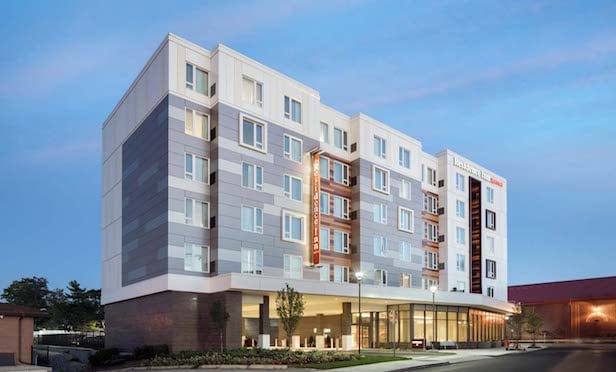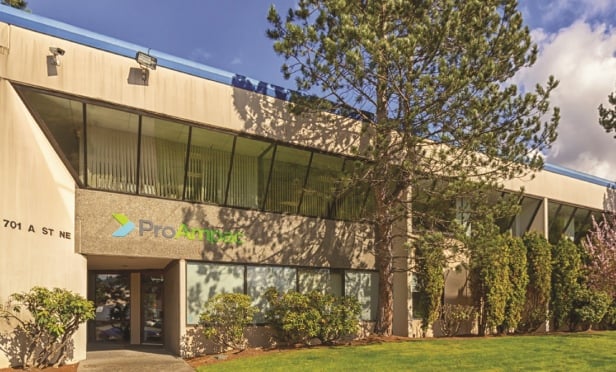LIVINGSTON, NJ—Pent up demand for multifamily investments and apartment rentals in Bergen and Passaic counties is mirroring what's happening in rival urban markets, in terms of net absorption and effective rents, according to Greg Pine of Gebroe-Hammer Associates.
The Livingston-based investment brokerage firm, which recently arranged two separate sales totaling 79 units in Hackensack and Passaic, confirms that the same new urbanism sweeping the waterfront markets is moving into suburbia and gaining greater momentum.
“Bergen and Passaic County rival Hudson County for the state's highest concentration of multi-family sales involving existing low-, mid- and hi-rise complexes and garden-apartment communities as well as new construction starts,” says Pine, executive vice president, whose focus is Bergen County and its secondary markets. “While these three markets are very similar in terms of occupancy rates of 97-plus percent, increased sales volume and property appreciation and falling cap rates, suburban hubs are now embracing a 'transit village' approach that benefits new and existing properties across the board.”
This philosophical shift includes adding to a municipality's apartment-building stock through capital improvements/property repositioning of Class B and C properties and redevelopment of underutilized or vacant properties within or near town centers, says Pine.
“Bergen and Passaic have not seen any sort of boom in apartment-building construction since the post-World War II era,” he says. “Today's preference for apartment living has prompted many municipalities – from Fair Lawn to Hackensack to Fort Lee and Wood-Ridge – to rethink their past zoning requirements and adjust their master plan to incorporate residential living near downtown shopping districts and train stations. This strategy has proven effective in retaining and attracting residents who are seeking an easy commute and walkable, urban-like lifestyle.”
One such municipality undergoing a philosophical shift is Hackensack, where the brokerage team of Pine and Nicholas Nicolaou, senior vice president, recently arranged the $5.1 million sale of a four-story elevator building at 40-46 Anderson St. The 47-unit property features newly renovated studio, one- and two-bedroom units with hardwood flooring, air conditioning and modern kitchens and baths. Built in 1940, the 24,850-square-foot property is less than 500 feet from Main Street where construction of 650+ new rental housing units are now in various stages of development.
In addition to proximity to shopping, lifestyle services and dining establishments, the building is just one quarter of a mile from the Anderson Street Station, which offers NJ Transit rail service along the Pascack Valley Line to Manhattan via Hoboken and 13 bus route connections.
“Once delivered to market, the new multi-family housing units will have a two-fold positive effect,” says Pine. “Not only will they revitalize Main Street, adding to the consumer base and its aesthetics, new units will have a rippling effect on the existing apartment buildings in terms of rent appreciation and an even stronger tenant population among those born between early 1980 and 2000 – millennials – and before 1960 – 55+ empty nesters.”
Similar trends are sweeping Passaic County, where Hawthorne and Little Falls are both exploring the transit village concept. In municipalities like Passaic, multi-family properties near the Passaic Rail Station remain at the forefront of investment demand, according to Debbie Pomerantz, Gebroe-Hammer's vice president.
Pomerantz recently arranged the sale of 32 units at 156-164 Gregory Ave. Located less than a mile from the Passaic Park Station, the neighborhood is known for its large mansions and Victorian and Tudor-style homes. Several prominent apartment complexes also are located in this popular residential district, including Carlton Tower, Presidential Towers and Barry Gardens.
The delivery of new multi-family product to Bergen and Passaic County is not expected to weaken performance of existing properties or dilute the tenant base.
“During the past four years, the impact of new product on vacancy rates has been non-existent,” says Pomerantz. “In reality, new construction has – and will continue to – lay the groundwork for significant rent growth among existing buildings, many of which have leveraged value-add opportunities to achieve never-before-realized rent appreciation.”
© Touchpoint Markets, All Rights Reserved. Request academic re-use from www.copyright.com. All other uses, submit a request to [email protected]. For more inforrmation visit Asset & Logo Licensing.







